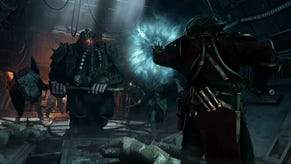Warhammer 40,000: Darktide - a stunning technical accomplishment that pushes PC hard
Analysis plus optimised settings for medium and high-end builds.
It's not often that we see a PC-focused game that really pushes the platform hard, but that's exactly what Warhammer 40K: Darktide does - and its visual quality is astonishing. It's particularly impressive given that developer Fatshark isn't using a mainstream engine like Unreal or Unity. So what makes this first-person co-op title so visually commanding, how well does it run and what are the best optimised settings for mid-range and high-end hardware?
Let's start with the basics - the idea here is that you choose a character from one of four classes from the Warhammer 40K universe, embark on missions with up to three other players, complete objectives in dark dystopian envrionments and bring home gear and ability upgrades for your character. The gameplay is a mix of Chivalry, Left 4 Dead and Diablo - and of course, builds on Fatshark's previous work on the Warhammer Vermintide series. Set to a phenomenal soundtrack from Jespyr Kyd, the game requires teamwork and some level of tactics as you switch between melee, ranged weapons and abilities to survive a grimdark onslaught.
Driving the visuals is Fatshark's own branch of the Autodesk Stringray engine, as far as I can tell, and it uses a cornucopia of modern rendering techniques to create one of the most authentic-looking renditions of Warhammer 40K that I have seen to date.
One of the first thing I noticed is that to render surfaces, Fatshark elected to use extensive parallax mapping - so on metal or stone, geometric detail is kept to a minimum but parallax-mapped trims are used to create bumpy detail like bolts, rivets, screws, divots stampings and so on. This shifts rendering load to a different part of the GPU, and geometry performance can instead be spent elsewhere - enabling the large, detailed environments that fit the oppressive gothic architecture the universe is known for.
Fatshark absolutely nailed the environmental design and atmosphere in Darktide, both figuratively and literally. Lit volumetric fog drives the appearance of many environments, providing a smoggy haze that mirrors that of decades of Warhammer 40K concept art. This is backed by a decoupled system for lighting and shadowing particle effects, similar to that of Alien Isolation.
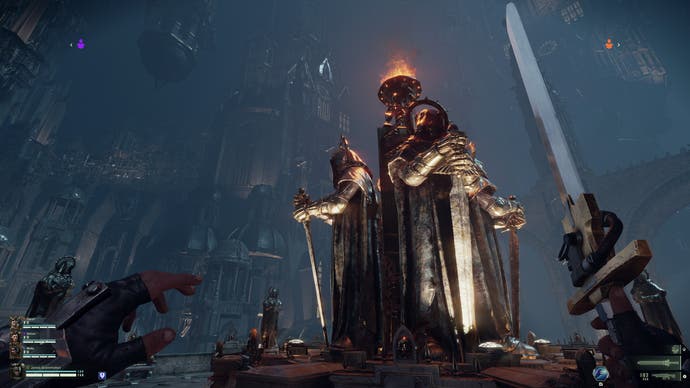

There's a stark emphasis here on real-time lighting and shadowing, with the player character's shoulder lamp, weapon flashlights and muzzle flash all producing shadows. This extensive usage of real-time shadowing is a perfect fit for the murky conditions and tense focus on survival. Darktide uses RT reflections, which add a ton more reflections than with SSR alone, and RT global illumination, a probe-based system that doesn't offer per-pixel detail but still allows for convincing real-time bounce light on a large scale.
The dynamic global illumination is well utilised too, with sudden changes - lights being lit or extinguished - radically altering the look of the scene to add tension or draw attention to an incoming threat.
But while Darktide is an impressive graphical showcase, there are some rough edges. The most obvious one for me was the quality of volumetric fog at a distance, which appears rather chunky with obvious aliasing and blockiness - perhaps calling out for a setting beyond extreme to fix this on future GPUs. Another issue was LOD handling; transitions between low and high-quality assets are often noticeably sudden with no crossfade, while some LOD models appear strangely shaped even on the highest settings.

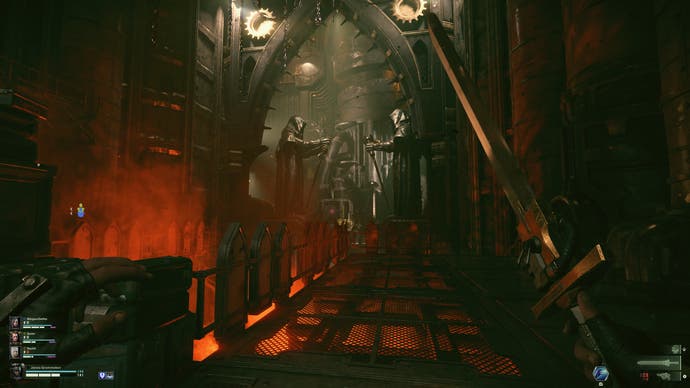
Despite these two issues though, this is still one of the best-looking multiplayer games I've played, with attention to detail and graphical features that rival those in slower-paced and cinematic single player games. And as you might imagine, that level of fidelity requires some careful settings choices to run well on mid-range PC hardware.
Before I get into those optimised settings, I want to briefly touch on performance and stability in general. In short, Darktide requires a fast CPU, due to the amount of animations and draw calls that need to be processed each second for the large amount of enemies on-screen. So there's only so much scaling we can expect, and 60fps is a more reasonable target than 120fps on many systems.
In terms of issues, this game doesn't suffer from shader compilation stutter, as shaders are cached on first boot, and then only when the game or your GPU drivers are updated. However, there are frame-time spikes as you move through the environments, which I suspect are related to things being loaded in en-masse. This seems to happen regardless of your graphical settings or system performance, and doesn't really go away unfortunately - as you can see demonstrated in the video embedded above.
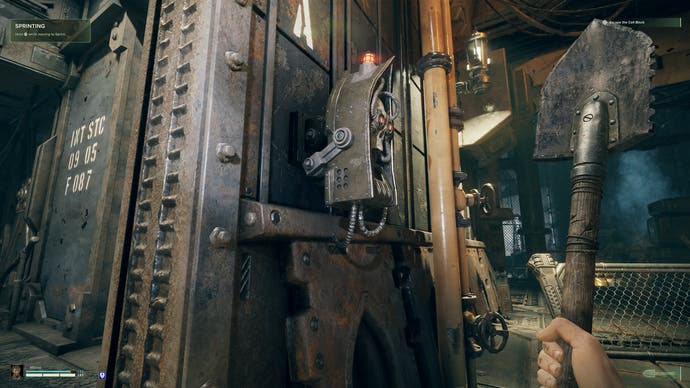
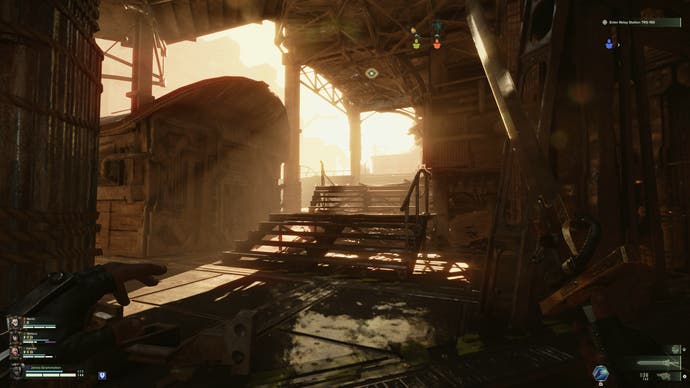
I also found performance with v-sync engaged to often round down to 30fps in scenarios that previously ran at 60fps, which suggests both that something akin to double-buffered v-sync is being used, and there is some variability in performance, perhaps related to server performance. To combat this, I'd recommend enabling v-sync through your GPU driver panel rather than using the in-game option if you're planning to use it at all.
Beyond this, there's some general instability, with one game crash and two disconnects in the eight missions I played out in full. This isn't unexpected for a brand new game, but hopefully will be fixed with game patches or GPU driver updates depending on the cause of the issues.
Now let's move onto optimised settings, where I'm targeting 60fps on an RTX 2060 Super and Ryzen 5 3600 machine that represents a reasonable mid-range PC.


First, I'd suggest some form of image reconstruction, either FSR2 or DLSS, as this improves the anti-aliasing over the standard TAA while boosting performance. FSR suffers from more disocclusion artefacts, but both options work to a good standard. Second, I'd suggest disabling all RT features on this level of GPU hardware, as just having RT reflections on low drops performance by more than 30 percent at 1440p and RT GI costs more than 40 percent of your performance. If you do want to use RT, I'd recommend using an RTX 3070 or above, and setting both RT GI and RT reflections to high - as there's no significant fps benefit to choosing the low setting.
Other meaningful performance wins can be found from setting screen-space reflections to medium (10 percent saving vs high), ambient occlusion to low (nine percent vs high), light quality to high, and volumetric fog quality to medium (if you need the extra performance) or extreme (if you prefer the extra atmosphere). Other settings have rather modest frame-rate implications, so feel free to leave them at their default values. Outside of the game, it's also possible to tweak the number of threads used by the game in the launcher - but in my testing, the default setting for your CPU provides the best performance.
So after all that, my optimised settings are summarised here - note we've got RT off on the mid-range build, saving on SSAO and SSR quality, and spending a bit more on volumetric quality.
| Alex's Optimised Settings | RTX 2060 Super / Ryzen 5 3600 | RTX 3070+ / Ryzen 5000+ |
|---|---|---|
| DLSS/FSR 2.0 | On | On |
| Ray-traced Reflections | Off | High |
| RTX Global Illumination | Off | High |
| Ambient Occlusion | Low | Low |
| Volumetric Fog Quality | Extreme | Extreme |
| Depth of Field | High | High |
| Bloom | On | On |
| Sub-Surface Scattering | On | On |
| Motion Blur | User Preference | User Preference |
| Screen-Space Reflections | Medium | Medium |
| Lens Effects | User Preference | User Preference |
| Lens Flares | All Lights | All Lights |
| Scatter Density | 1.0 | 1.0 |
| Worker Threads | Max -1 (Default) | Max -1 (Default) |
In total, optimised settings will save 18 percent performance over maxed settings in a dense scene; using DLSS in addition will save 97 percent over native at unoptimised settings.
This is one of the best realised art styles and visually technically accomplished games that you can play on PC, so I hope that post-launch patches can fix some of the performance oddities and prevent the crashes and disconnects I've experienced while testing. Vermintide quietly became an excellent co-op experience, so I have high hopes for its successor.
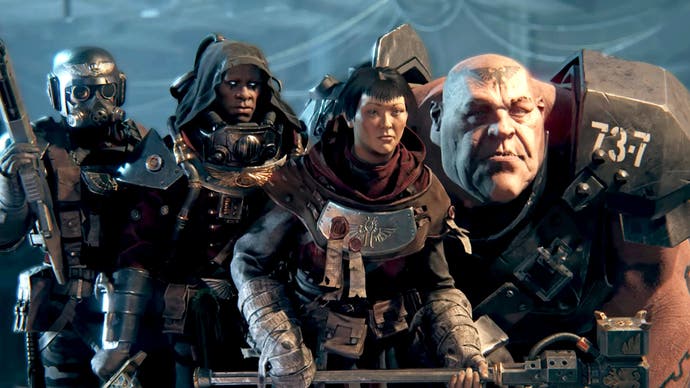



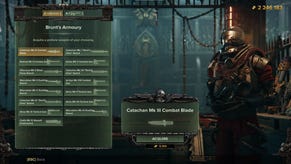
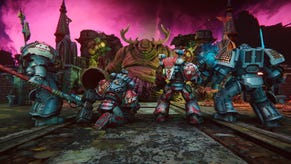
.jpg?width=291&height=164&fit=crop&quality=80&format=jpg&auto=webp)
